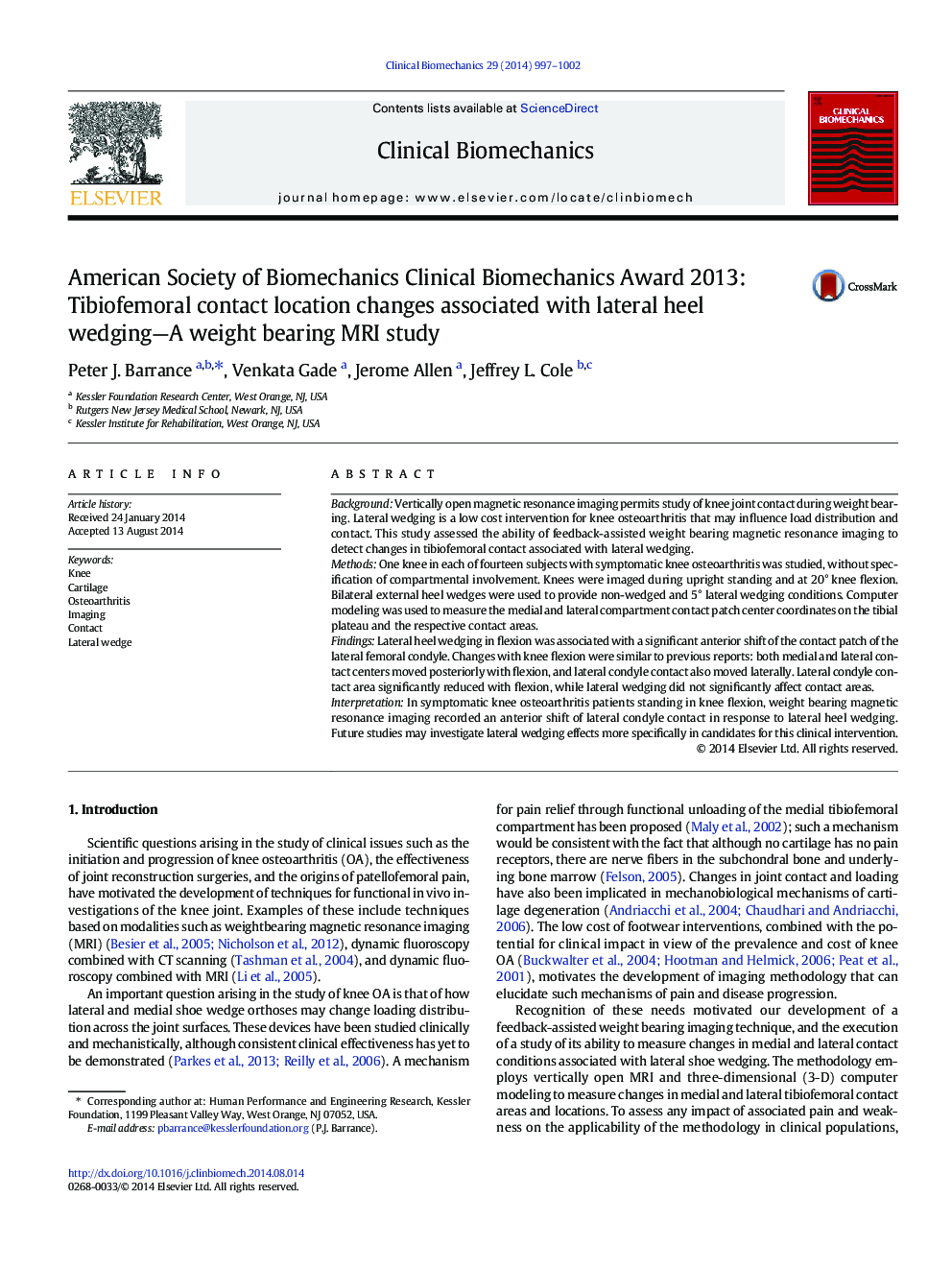| کد مقاله | کد نشریه | سال انتشار | مقاله انگلیسی | نسخه تمام متن |
|---|---|---|---|---|
| 4050299 | 1264920 | 2014 | 6 صفحه PDF | دانلود رایگان |
• Feedback assisted vertical MRI was used to measure knee joint contact while standing.
• With a lateral heel wedge, lateral condyle contact moved anterior on tibial plateau.
• Changes in contact location and area with knee flexion were similar to prior studies.
• Feedback assisted vertical MRI is compatible with the symptomatic knee OA population.
BackgroundVertically open magnetic resonance imaging permits study of knee joint contact during weight bearing. Lateral wedging is a low cost intervention for knee osteoarthritis that may influence load distribution and contact. This study assessed the ability of feedback-assisted weight bearing magnetic resonance imaging to detect changes in tibiofemoral contact associated with lateral wedging.MethodsOne knee in each of fourteen subjects with symptomatic knee osteoarthritis was studied, without specification of compartmental involvement. Knees were imaged during upright standing and at 20° knee flexion. Bilateral external heel wedges were used to provide non-wedged and 5° lateral wedging conditions. Computer modeling was used to measure the medial and lateral compartment contact patch center coordinates on the tibial plateau and the respective contact areas.FindingsLateral heel wedging in flexion was associated with a significant anterior shift of the contact patch of the lateral femoral condyle. Changes with knee flexion were similar to previous reports: both medial and lateral contact centers moved posteriorly with flexion, and lateral condyle contact also moved laterally. Lateral condyle contact area significantly reduced with flexion, while lateral wedging did not significantly affect contact areas.InterpretationIn symptomatic knee osteoarthritis patients standing in knee flexion, weight bearing magnetic resonance imaging recorded an anterior shift of lateral condyle contact in response to lateral heel wedging. Future studies may investigate lateral wedging effects more specifically in candidates for this clinical intervention.
Journal: Clinical Biomechanics - Volume 29, Issue 9, November 2014, Pages 997–1002
